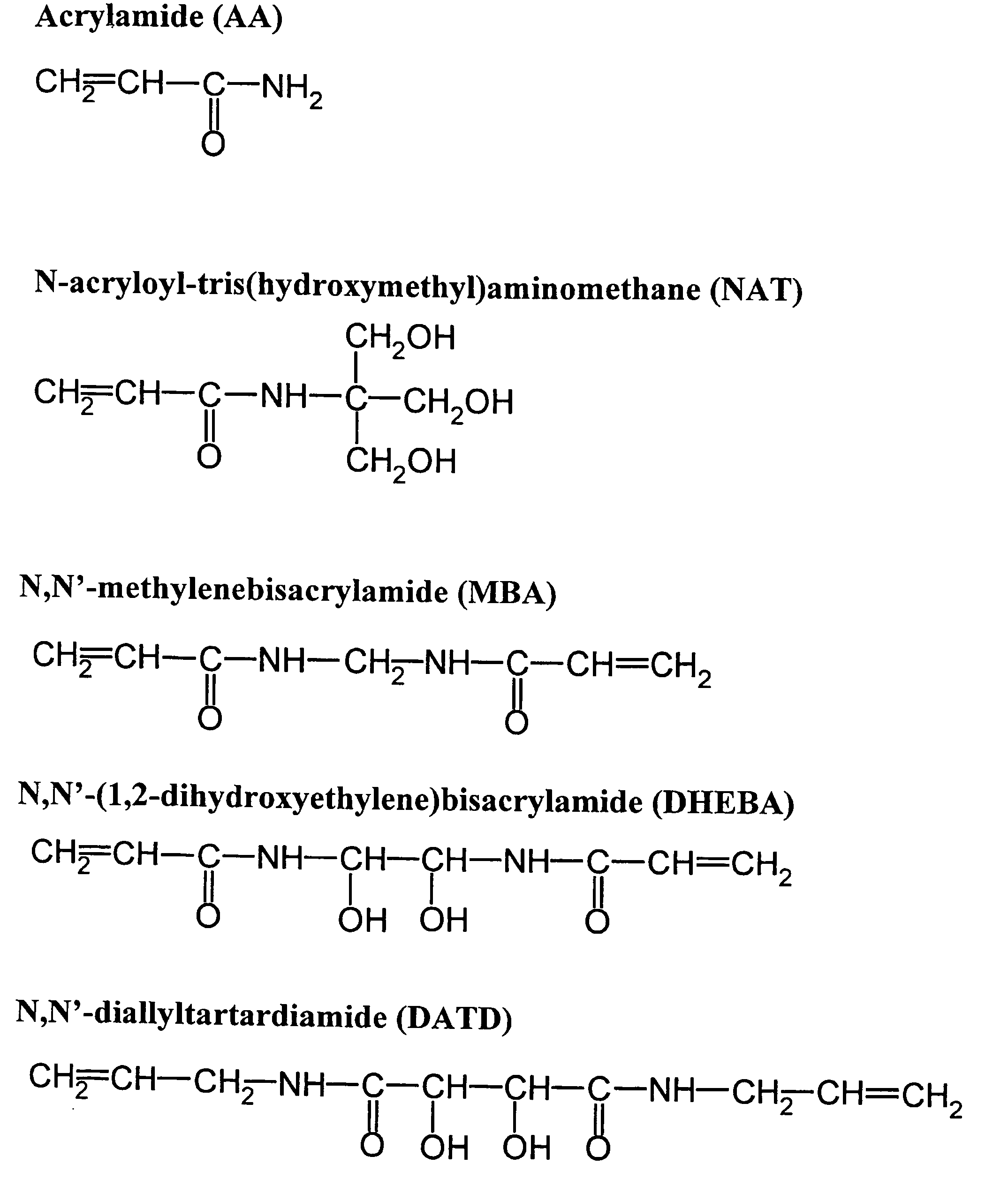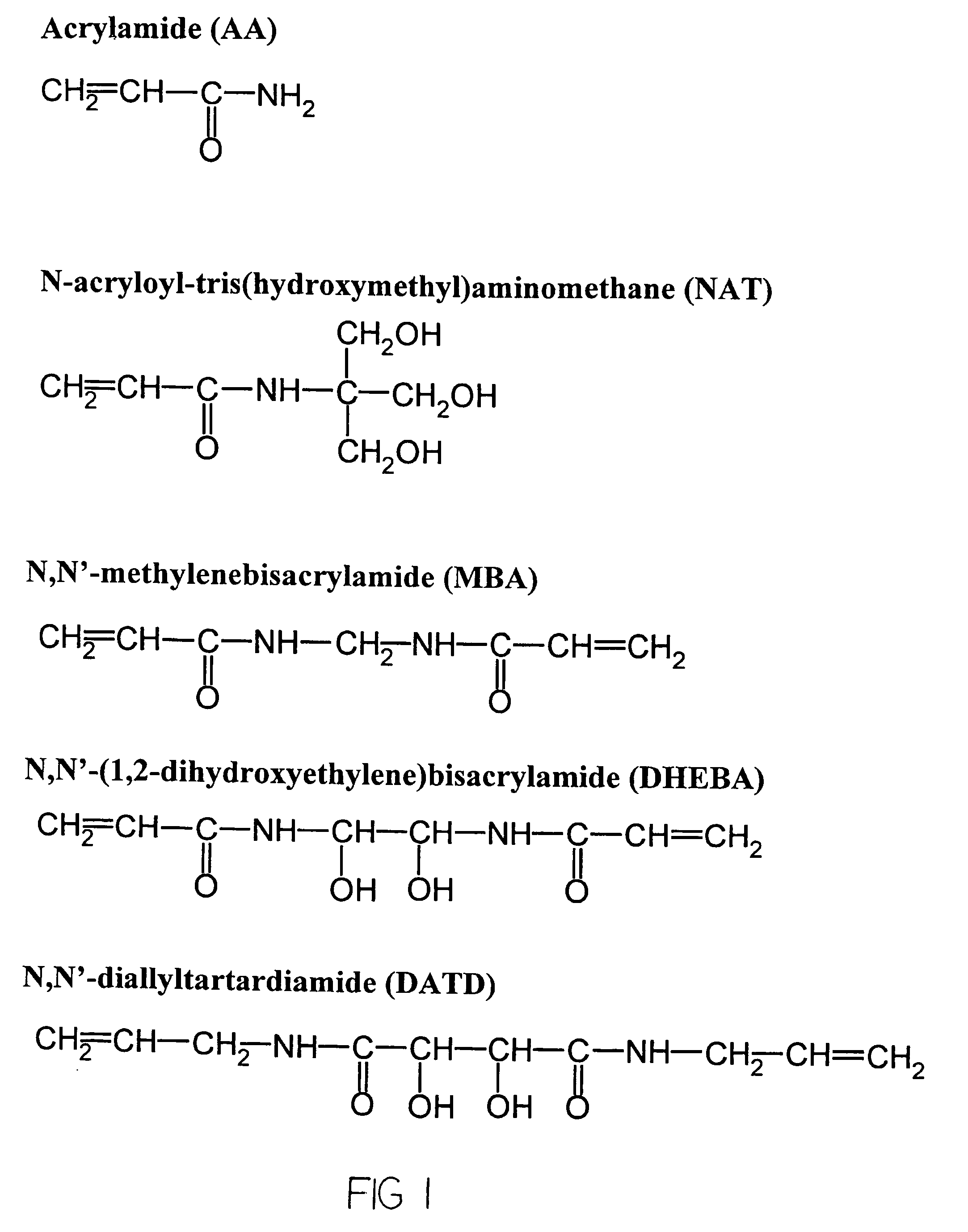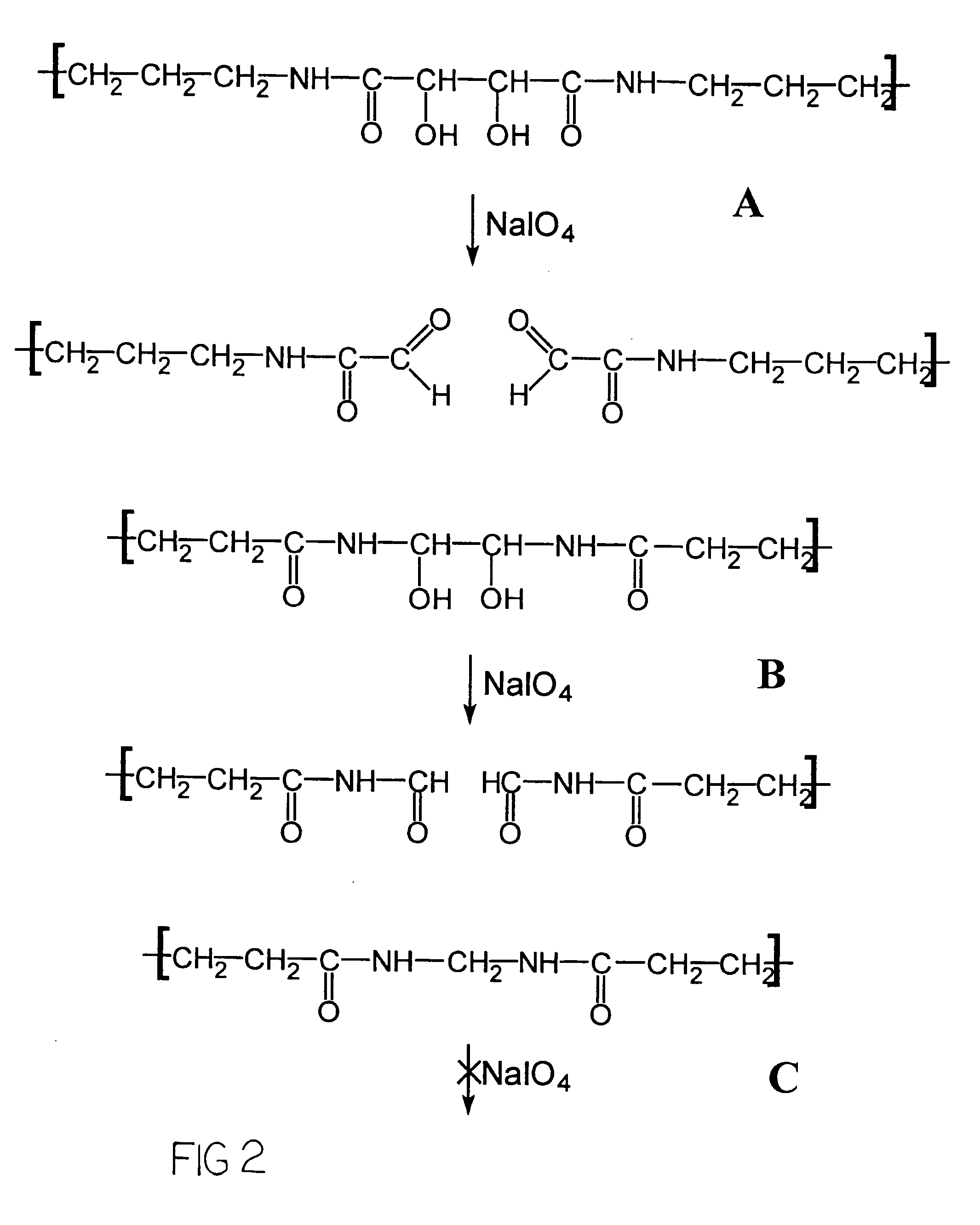Microarray system
- Summary
- Abstract
- Description
- Claims
- Application Information
AI Technical Summary
Benefits of technology
Problems solved by technology
Method used
Image
Examples
example 1
Production of Gel Micromatrix I.
[0052]A polymerization chamber consisted of a glass slide treated with Bind-Silane (LKB, Sweden) and a quartz plate mask of a specified topography: transparent 100×100 μm square windows spaced by 200 μm were arranged on a 1 μm thick chromium non-transparent layer. The slide and the mask were separated by 20 μm-thick teflon spacers. An exemplary polymerization chamber and a method for making same is disclosed in U.S. Pat. No. 5,770,721, incorporated herein by reference.
[0053]Generally, the chamber was filled with a solution containing acrylamide, N,N′-(1,2-dihydroxyethylene)bis-acrylamide (DH EBA), N,N′-methylenebisacrylamide (Bis), glycerol, methylene blue, TEMED in sodium phosphate buffer (PB), pH 7.2. Preferable concentrations of the components of the solution are approximately 3% acrylamide, 0.8-0.9% N,N′-(1,2-dihydroxyethylene)bis-acrylamide (DHEBA), 0.13-0.15% N,N′-methylenebisacrylamide (Bis), between 30 and 50% glycerol, 1-2% (most preferably 1...
example 2
Production of Porous Gel Micromatrix II
[0057]Same polymerization chamber as from Example 1 was used for fabrication of micro matrices for further hybridization experiments, while a chamber with a 1000×1000 μm mask with 40-μm spacers were used for preparation of micro matrices for diffusion experiments. For fabrication of this exemplary porous gel micromatrix, the chamber was filled with solution containing acrylamide, N-acryloyltris-(hydroxymethyl)-aminomethane (NAT) N,N′-(1,2-dihydroxyethylene)bisacrylamide (DHEBA), N,N′-diallyltartardiamide (DATD) N,N′-methylenebisacrylamide (Bis), glycerol, acetone, TEMED in sodium phosphate buffer, and at approximately neutral to slightly acidic pH. Preferable concentrations for the polymerization solution include approximately 1-2% (most preferably 1.5%) acrylamide, 1-2% (most preferably 1.5%) N-acryloyltris-(hydroxymethyl)-aminomethane (NAT), 0.65-0.75% (most preferably 0.70%) N,N′-(1,2-dihydroxyethylene)bisacrylamide (DHEBA), 0.15-0.25% (most...
example 4
[0061]Preparation of Oligonucleotides and ssDNA
[0062]Oligonucleotides for experiment (FIG. 3) were synthesized on a 394 DNA / RNA synthesizer (Applied Biosystems) by standard phosphoramidite chemistry. Oligonucleotides for immobilization on microchips, long oligonucleotides (59 nt and 89 nt) for study of free diffusion, and reverse primer for DNA amplification contained 5′-amino groups introduced by use of 5′-Amino-Modifier C6 (Glen Research). Long oligonucleotides and reverse primer were labeled by Texas Red sulfonyl chloride (Molecular Probes) according to manufacturer protocol and then were purified by preparative denaturing PAGE.
[0063]A 188 bp dsDNA (FIG. 3) was prepared by PCR amplification from insert of cloned human carcinoma-associated antigen.
PUM
 Login to View More
Login to View More Abstract
Description
Claims
Application Information
 Login to View More
Login to View More - R&D
- Intellectual Property
- Life Sciences
- Materials
- Tech Scout
- Unparalleled Data Quality
- Higher Quality Content
- 60% Fewer Hallucinations
Browse by: Latest US Patents, China's latest patents, Technical Efficacy Thesaurus, Application Domain, Technology Topic, Popular Technical Reports.
© 2025 PatSnap. All rights reserved.Legal|Privacy policy|Modern Slavery Act Transparency Statement|Sitemap|About US| Contact US: help@patsnap.com



